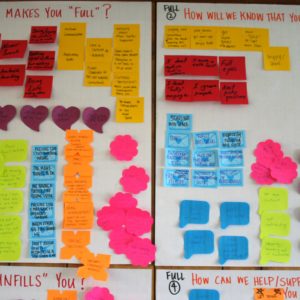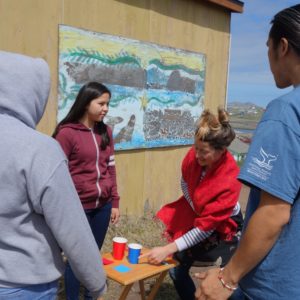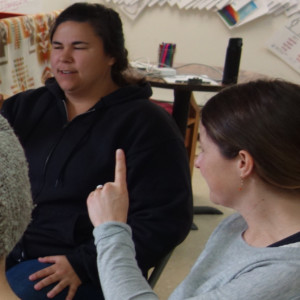Language revitalization doesn’t happen once; it signifies a necessary and continual process throughout the life of a language. Revitalization happens every time a new person learns the language, every time a child becomes an adult and attains a “Superior” proficiency. Language and culture must constantly internally expand and renew, in order to account for the natural cycles of death and birth, along with competing cultural pressures that have always exist between communities.
In a memetic sense, memes that don’t stick, don’t last beyond a human lifetime. Successful culture (meaning successfully regenerating culture, not in the sense of “gross national product” or some other modern commercial or militaristic measure) always has a spreading mechanism amongst its members, always sticks like burrs on the coat of a passing dog.
In the face of imperial, modern pressure, globalized cultures speaking languages such as English, Chinese, and Hindi (though even Chinese and Hindi speakers have expressed concerns about the endangerment of their languages), suffocate and overrun indigenous, small-scale cultures and languages. In essence, rather than sticky, modern imperial culture moves more like an oil spill. Stickiness becomes too delicate of a word for the memetic immersion perpetuated on the more human-scale village and tribal societies by globalizing culture.
To outcompete the cultural onslaught, to revitalize an endangered language, a community must first revitalize their culture of interaction. Revitalizing their language, for at least a core group, but eventually for the entire community, must become a central obsession. In the face of day-to-day struggles and economic pressure, along with conventional views on the extreme difficulty of learning a language, this presents too great a challenge to an average community.
However, if we focus on the twin issues of “immersion”, and “stickiness”, and see the connection to community interaction, we can begin to understand how an extremely immersive, sticky language game can finally outcompete other concerns that have so far suppressed language revitalization.
This means that language revitalization all comes down to how long it takes a small community core to build fundamentally different habits around their language, and to pick up and master a grassroots mentoring language toolkit; a game that seamlessly integrates several hundred of the most powerful, cutting edge understandings commonly known in the world of education, but rarely used in institutional environments, and never in the form an integrated system as we have developed in the “Where Are Your Keys?” fluency game.
Even in very dire situations, with only a dozen fluent speakers left, we believe we can often support a community making a radical transformation in a matter of weeks.
In this sense, though at this point of course we don’t see a “Novice” attaining a “Superior” proficiency level in that time, we do see them acquiring the community habits and teaching skillsets that make “Superior” level inevitable for them and those they bring along with them, and every week thereafter that passes, the entire community strengthens and becomes more bulletproof to the slings and arrows of modern culture. The infectious nature of renewing and strengthening their web of language and identity creates an overwhelming momentum. The ability to successfully transmit skills and fluency through play and social interaction make language revitalization contagious.





Cajun French desperately needs help as a language of historic value. The children of South Louisiana are being taught Standard French in the schools even though they have a constitutional right to Cajun. Regardless of what LSU’s language department says, it is NOT “just a dialect.”
I’m in Ohio with no means to go back home and start this. Maybe someone else could do it though.